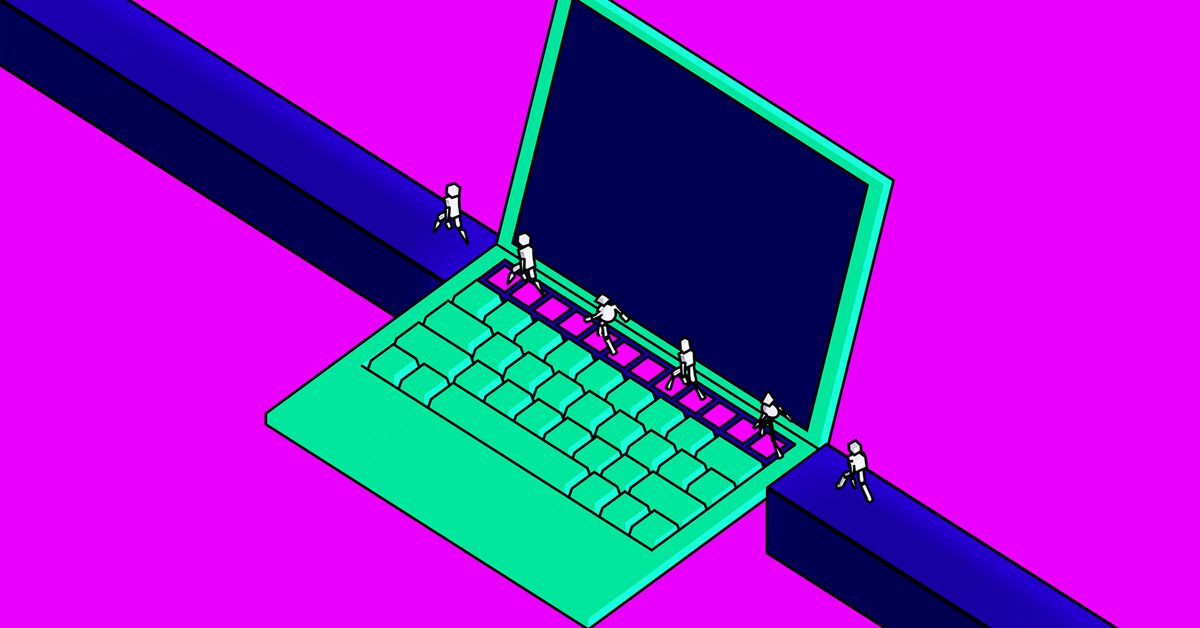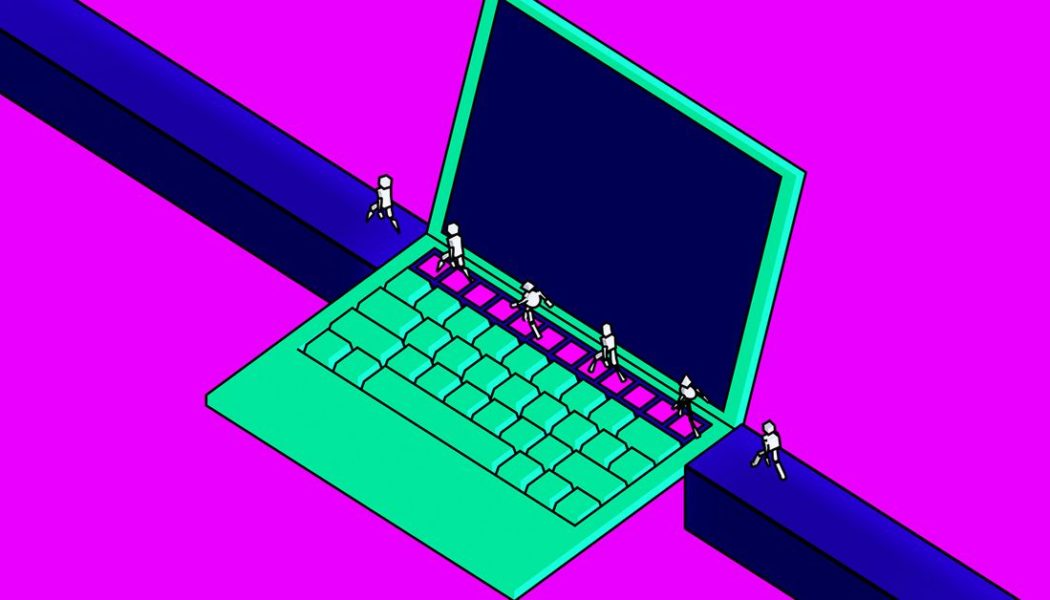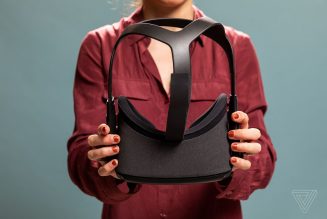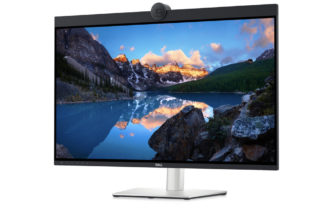
Six years ago, Apple introduced the touch bar, a thin touchscreen strip that replaced the usual row of function buttons on its MacBook Pros. To say it has been controversial would be an understatement.
Among tech media’s elite, it’s one of the most widely and consistently bemoaned gadget features in recent memory. “In several years it’ll just be a useless appendage, like the last protohuman with a tail,” Engadget wrote in its review of the most recent MacBook Pro. “Apple’s Touch Bar was an expensive gimmick, and I hated it as much as the disastrous butterfly keyboard,” CNET wrote in a column last year. Different Verge reviewers have referred to the little touchscreen strip as “hopelessly confused”, “baffling”, “dreaded,” “aggravating”, and “infinitely worse than a hard button” at various points in its life. To a bystander, it would appear that everyone in the market for a MacBook finds the thing wholly useless.
Everyone, that is, except accessibility-minded writers like Steven Aquino. Aquino, who is disabled, finds laptop keyboards difficult to use, due both to the fine motor skills required to perform the shortcuts and to the cognitive load required to remember them. The touch bar allows him to access in one tap features that would otherwise require multiple — everything from sending emails to selecting emojis.
“That the company packed so much functionality for disabled people in that thin strip of screen is nothing short of remarkable,” Aquino, a freelance journalist who covers accessibility, wrote in a column for Forbes.
As the touch bar has persisted through several cycles of MacBook Pro, with laptop reviewers unanimously complaining every step of the way, Aquino has been pleading with the public (and with his fellow tech writers) to understand how much the touch bar has benefitted him. Being its champion hasn’t been easy — at times, he’s felt like “a lone ranger.”
“Every time I talk about it, people say to me how stupid I am,” Aquino tells me, voice cracking with emotion as he relayed the story over the phone. “That strip of tech has some really helpful accessibility to it. And nobody talked about it. They all just hated on it.”
Aquino’s frustration is hardly an uncommon one among journalists who are currently covering this rapidly evolving beat. Over 25 percent of US adults have a disability, but rigorous and centralized accessibility information is still hard to find for even the biggest tech releases. I asked accessibility-focused writers across the tech and gaming space how the media industry can better cover assistive technology, and the answer, it turns out, is that it’s a bit too early to be asking that question. The biggest outlets aren’t consistently covering it, many of the writers felt. They should start doing so.
In reporting this piece, I set out to speak to the reporters on staff at major tech publications who primarily cover assistive technology. I very quickly learned that there are not many.
Over the past decade or so, “accessibility tech” — broadly, gadgets, software, and features tailored towards disabled users — has gradually become a public priority for large tech companies. Even more recently, it’s become standard for companies like Apple and Google to include an “accessibility” section in their conferences and keynotes. Alt text and audio descriptions have become an expectation across the internet, and blockbuster games are shipping with sprawling accessibility menus. Microsoft opened a 2,000-square-foot lab dedicated to inclusive gadgets this year. There is an audience for such technology, or at least the world’s largest companies are betting that there is.
Still, accessibility stories are overwhelmingly assigned to freelancers, or to staff writers whose primary beat is something else. (Case in point: I am a computing reporter at The Verge.) The freelancers I spoke to, many of whom have been covering accessibility for many years, largely do not know each other. To their knowledge, there are no regular meetups for accessibility journalists, frequent events where they might run into each other, or infrastructures in place for them to share resources.
Grant Stoner, who has covered accessibility in video games for publications like IGN, Launcher, and Wired, thinks editors just haven’t realized that an audience for this content exists. Can I Play That, the accessibility-focused blog where Stoner worked early in his career, has a dedicated following that has grown “drastically” since his time there. A recent article of his received well over 2,000 comments and spent several days on the front page of IGN. He often receives emails about his stories from grateful readers.
“This is something that people care about,” Stoner says. “This is coverage that major publications can easily fold in.”
Aquino’s theory is that editors view assistive technology as a niche product for disabled people, when it’s something that the general public should be paying attention to. “People have to know you could fall and hurt your arm or your foot or something, and you could have some need that accessibility [features] would be helpful for,” Aquino says. “The tech sites have so much room to go a lot more in-depth if they choose, and it frustrates me to all hell that they don’t.”
But the question of what that should look like is hard to answer — and one that publications will need to grapple with as the beat continues to grow.
There are several important ways in which “accessibility tech” differs from the laptop or smart home beat. There are certainly releases — such as Microsoft’s Surface Adaptive Kit, or its earlier Xbox Adaptive Controller — that a specialized writer might be best equipped to cover. But what publications don’t seem to understand, many of the journalists I spoke to feel, is that the accessibility beat doesn’t stop at “accessibility” products. Nobody, after all, solely buys and uses “accessibility tech”; disabled users purchase every type of gadget, and may need specific information to determine whether they can use it.
Chris Reardon, a freelancer who has covered accessibility for publications including PCMag and Gizmodo, and who has disabilities due to complications from radiation on a brain tumor, has specific needs for his gadgets: He needs specific keyboard keys and large button controls. He needs big fonts and high color contrast. Device shopping, as a consequence, is a bit of a wild goose chase. “I’ll often have to research reviews and watch like, six or seven so I can find all the information,” Reardon says.
And much of what Reardon and others are able to find doesn’t appear to be written by disabled writers — which is fine, many of the journalists I spoke to caveated, but does limit how reliable they feel the information is.
“I don’t want to make it seem like you have to be disabled to cover this stuff,” says Tony Polanco, who uses a wheelchair but does not primarily cover accessibility — he writes about computing for Tom’s Guide. But he does feel that non-disabled journalists don’t always get the facts exactly right. “When I read some of these things, I’m like, ‘Oh, it’s a little off there’,” he says.
VR is one common point of frustration. As disabled gamers have noted, the controllers can be difficult for people with limited mobility to operate, and gameplay can require reaching, turning, and other large movements. As a wheelchair user, Polanco has had trouble playing certain games because his position put him a few inches below where other seated users would be. “I’ve seen reports say, ‘Oh, this VR game is good because you can play it sitting down, and that means anybody can play it.’ That’s not exactly true,” Polanco says. “That’s something reporters actually aren’t aware of, these little things.”
Stoner feels that media who covered Elden Ring got so caught up in debating the game’s lack of an “easy mode” that they missed the boat on discussing the accessibility of its overall design, and on exploring the builds that were best for disabled players to use. “It’s a topic that I wish would just be buried into oblivion,” Stoner says of the easy mode controversy.
John Loeffler, who is the computing editor at TechRadar and also covers accessibility, agrees that there’s a limit to the insight he has as a non-disabled reporter. “It’s one thing for me to talk about the Microsoft Surface Adaptive Kit. It’s another for someone who’s like, when this review is done, I’m going to be using this on my own personal device,” he says. “That’s more important than me just talking about how great it is from a 30,000-foot view.”
This has led to some indecision for tech and games journalists with disabilities who don’t want to cover accessibility. Stoner, who is disabled, tried hard to avoid the beat when he first became a journalist in the mid-2010s. “All the other stories were very … inspirational,” he says, referring to a phenomenon that disabled journalists have been protesting for years. “I was like, yeah, I don’t want to do this, I’m not inspirational, I don’t want to be inspirational.” At that time, Stoner recalls, it was also hard to get accessibility-related stories published in the first place. “I was pitching five stories a week, and they were all like, ‘No, we’re not interested.’”
But as the topic grew in importance over the years, and as more outlets have invested in such reporting, Stoner has been sold on it. “It’s not perfect by any means … but it’s definitely trending upwards,” he says of the industry’s coverage today.
Polanco still isn’t sure how he feels. He was hired to write about computers, and that’s what he wants to do. Like Stoner, he worries about being pigeonholed in a certain way. “I get enough attention as it is,” he says. “‘Oh, it’s Tony, the wheelchair reporter.’ I don’t want to be labeled in that way.” He certainly wouldn’t want to be assigned to the accessibility beat because of his disability. “I would feel very insulted by that,” he says.
At the same time, Polanco does feel that he has more authority on the subject than non-disabled writers do and agrees that centering voices like his own is important to the beat. He often wonders whether he should be doing more. “If something really comes up big in tech that’s accessible, I could cover it fairly well,” he says. “I have authority to talk about this. But I just want to review computers.”
Stoner thinks these sorts of pressures would be less of a problem if outlets had more than one disabled person, or a few disabled people on staff. “The gaming industry is very good about having token people to represent specific topics,” he feels. “Just because you have disabled members on your staff doesn’t mean you get to throw everything related to accessibility at them.” But, he clarifies, “If you have disabled members of your staff who actively want to write about this, they should be getting first dibs.”
To some journalists, the solution is simple: Hire an accessibility reporter. Aquino feels strongly that accessibility deserves its own beat. “They should be hiring someone to cover it like it’s their job,” he answers immediately.
Others favor more of a widespread approach — that every tech reporter, on every beat, should have accessibility in their minds. Several floated the idea of publishing an accessibility review alongside every standard product review evaluating that product from an accessibility standpoint.
Mark Barlet, the founder and executive director of AbleGamers, a charity that promotes accessibility in video games, is in that camp. “As a person with disabilities, I’m excited about this new thing too, and I want to know everything about it, including its accessibility,” Barlet says. “I want my phone reporter to help me fall in love with my next device and understand that I’m a person with disabilities as well … My disability isn’t in a vacuum. I’m still a consumer.”
But in both cases, people agree, having more disabled journalists in newsrooms — regardless of the beat they’re on — would be a big help. It’s something that’s made a difference on Barlet’s team at AbleGamers, which includes a number of members with disabilities. The more the community is represented in meetings, and in discussions in general, Barlet feels, the more attune the whole group is to its needs.
It is hard to find data about how well represented disabled writers are in US media writ large, let alone at tech publications. Newsroom diversity, in general, is not particularly well tracked. There is not a prominent national organization for disabled journalists — there’s a National Center on Disability and Journalism, but it’s largely focused on helping non-disabled journalists cover disability. “I have had to actively find every other disabled journalist I know,” writer Sara Luterman wrote in a column for Nieman Reports.
“I’ve had people come up to me, handicapped people, and go ‘Oh, I didn’t know we could do this,’” Polanco says. “They’ve never seen anybody like themselves doing this stuff.”
Tech newsrooms (The Verge’s very much included) need informed accessibility coverage. They need articles drawing from firsthand experience. They need to do that without heaping the burden on a small group of disabled writers. It’s a hard problem to solve, but one that should center disabled writers every step of the way.








